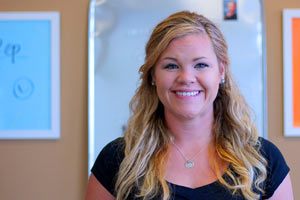 Writing a good email is harder than it looks. Sure, most of us feel like we’re writing and sending emails all day, every day, but firing off an email to your colleague or a note to a friend is a world apart from writing to your leads.
Writing a good email is harder than it looks. Sure, most of us feel like we’re writing and sending emails all day, every day, but firing off an email to your colleague or a note to a friend is a world apart from writing to your leads.
At Influence & Co., I act as the bridge between marketing and sales, coaxing those who’ve shown interest in us through engagement on our site onto a call with a member of our sales team about how we can help them and whether working together would be a good fit. And a lot of my work is done through email.
As the first touchpoint for people who are considering working with your company, you need to educate and guide leads through the process. If your emails aren’t getting read or getting the response rates you need, here are a few things that might be going wrong:
1. You're not persistent enough.
When I started doing outreach, I worried about annoying people, but persistence ultimately wins leads. My fourth follow-up email (which is also my last) consistently gets the best response of all my attempts — and I’ve never once encountered someone who was angry or hostile about receiving multiple messages. This month alone, 60 percent of the calls I’ve set up using my personal outreach process were responses to my fourth follow-up.
Now, some people will still ask to be removed from your list, and that’s normal. When you send sincere emails targeted to the right people, you’ll be surprised by how appreciative they are, even if they’re not interested in your offer to connect at that time.
2. You haven't personalized your approach.
Does this feel familiar?
via GIPHY
Your leads are busy people, and they receive tons of emails every day. Cut through the noise by getting personal as early as your email subject line. For example, subject lines like “Thanks for downloading our whitepaper — we should chat!” or “Loved your blog post about starting your business from your apartment floor” are far more likely to encourage people to open your email than some generic, salesy text.
Always open your email message with who you are, what you do, and what prompted you to reach out. If you’ve spoken before, you’ll jog their memory about your company and how you originally became connected. If you haven’t, they’ll recognize that you’re a real person and not some bot sending a mass email.
Google your leads’ companies, and find out whether your product or service is even a good fit for them. Pay attention to interesting blog posts, company culture, and anecdotes they’ve shared that you can reference in an outreach email. This level of personal engagement sets the tone for future conversations, and it better equips you to explain how they might benefit from your offer.
3. You're not scheduling follow-ups efficiently.
You need to get leads on the phone, and you can waste a lot of time if you don’t organize your schedule effectively. I used to offer three times that a lead could choose from to schedule a follow-up conversation, or I’d give them my number and ask them to call me. After feeling like I was being stood up on a terrible blind date one too many times, I started using Calendly to let leads choose times that work for them. This gives them more freedom in the process and makes it easier for me to find a salesperson who will be available for the conversation — and it ensures that I’m not wasting time waiting around for a call that will never come.
Here’s an example of how I incorporated it into one of my recent outreach emails:
Hi Shawn,
I saw that you downloaded our whitepaper on thought leadership. Thanks! I really hope it’s a valuable tool for you.
After reading a little more about [COMPANY NAME], I was really impressed with the resources you offer patients going through what is, no doubt, one of the most difficult times of their life.
I’m reaching out because I think there could be a great opportunity to work together. My company, Influence & Co., specializes in helping individuals produce and publish content that builds trust, influence, and relationships with key audiences for their companies.
If this sounds like something you’d be interested in, I’d love to set up a call to learn more about your strategy and goals for educating your audience, attracting top talent, and gaining brand awareness to see if we might be a good fit.
Feel free to choose a time that works for you here: https://calendly.com/cherish
Have a great afternoon, Shawn!
Cherish
You need a solid system for scheduling email follow-ups as well. I love Boomerang because emails bounce back to me if they haven’t received a response within a certain amount of time, and I can see at a glance where someone is in my follow-up cycle. It’s also useful for keeping track of leads who asked you to reach out again in a certain timeframe, like right before they finalize their budgets in the first quarter of the year.
Ultimately, you need to trust what works for you. Sometimes, your experience will buck industry trends, and that’s OK. I obsess over articles about what times and days of the week are best for sending emails, but contrary to everything I’ve read, I’ve gotten the best open rates between 3 p.m. and 4 p.m. Most of my peers think that’s too late in the day, but that’s when I get the most responses and the highest instances of people agreeing to get on the phone.
Since I’ve been using this strategy and pushing later in the day, my first-email responses and call numbers have nearly doubled in the past six months. For instance, in April, I set up 27 calls, and our final call count in October was 42.

When you discover a good strategy, share it with your marketing and sales teams. Knowing when your audience is most amenable to talking can help them improve their approaches as well.
Bottom line: You need to experiment to find what works and go with what yields the best results. Most importantly, talk to your leads like people, not just sales prospects. You’ll form a steady rapport that keeps you top of mind and increases the likelihood that they’ll talk to — and buy from — you.
Learn more about how content can enable your sales process by downloading your copy of “The Content Marketer's Guide to Sales Enablement” below:









